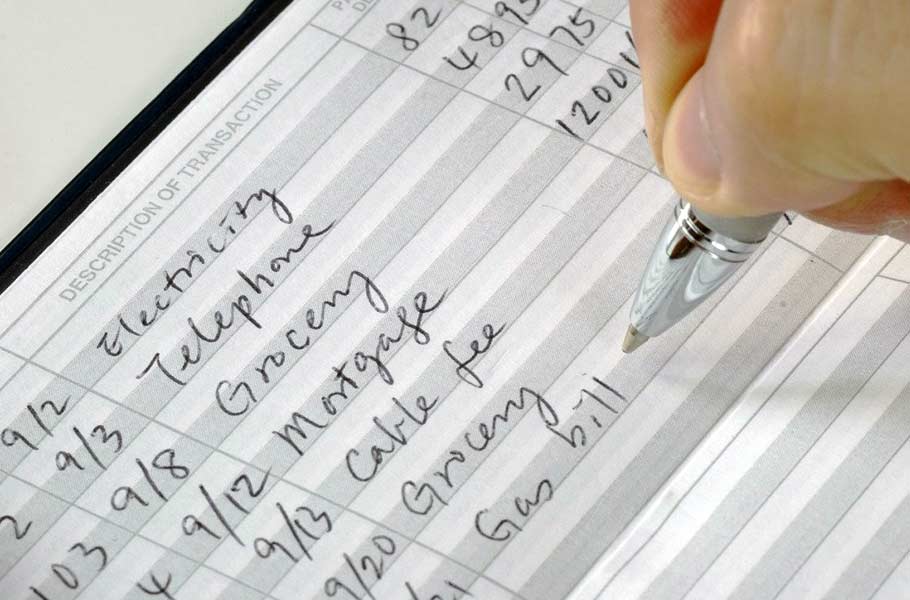Having multiple checking accounts at the same bank is not only possible; it’s a decision that could align with your financial goals. This article explores the advantages of maintaining multiple accounts and offers guidance on managing them effectively.

Key Takeaways
- It is possible to have multiple checking accounts at the same bank, which can be beneficial for financial organization, separating personal and business finances, and proactive saving.
- While multiple checking accounts can lead to better organization and savings, they may increase the risk of overdrafts, complicate budgeting without tools, and potentially result in higher fees.
- Effective management of multiple checking accounts can be achieved through the use of mobile banking, consolidated financial dashboards, and the integration of budgeting apps for those who find handling many accounts challenging.
The Basics of Checking Accounts
A personal checking account is a type of bank account that serves as your financial cornerstone. It’s a versatile tool for everyday money management. It provides a safe and convenient platform for depositing and withdrawing funds, paying bills, and executing other financial transactions.
The beauty of a checking account lies in its easy fund transferability, allowing for one-time or recurring transactions. This offers a safer and more organized alternative to carrying cash.
Opening a checking account is a breeze. Typically, it requires only a minimal initial deposit, making it accessible for a wide range of users. Now, let’s examine the idea of operating multiple checking accounts and the potential benefits they offer.
Can you have multiple checking accounts at the same bank?
Yes, most banks allow their clients to have multiple checking accounts. The key lies in understanding their specific policies and terms. Some banks even offer benefits to customers who open multiple checking accounts, such as rewards under relationship banking. However, before opening another account, carefully evaluate the potential benefits, risks, and how these accounts may align with your financial needs.
The process of opening additional checking accounts varies among banks. Some offer the convenience of online account creation, while others might require an in-person visit or a phone call.
Advantages of Having Two Checking Accounts
Having two or more checking accounts can offer an array of benefits. This can include better financial organization, efficient separation of personal and business finances, and proactive savings.
We will examine these benefits more closely.
Financial Organization
Multiple checking accounts can be a boon for organizing your finances. They allow for easier budgeting and expense tracking, especially when you’re juggling finances between different people. For instance, you could allocate one checking account solely for bills and another for everyday expenses, enabling clear tracking of transactions.
Joint checking accounts, on the other hand, can be beneficial for managing shared expenses, all while keeping personal finances separate and organized. But how does blending personal and business finances work? Let’s discover.
Personal vs. Business Finances
Running a business? Having separate checking accounts is not just beneficial, but also legally required for corporations and LLCs. This separation aids in better financial organization across all business structures. Keeping personal and business expenses separate ensures accurate expense tracking, which is crucial for tax deduction identification and simplifying bookkeeping during tax preparation and audits.
Moreover, separate accounts for personal and business use can facilitate business owners in obtaining financing and establishing a business credit history. So, how do multiple checking accounts impact savings? Let’s delve deeper.
Proactive Saving
Having separate checking accounts for specific financial goals can help you visualize your progress and ensure funds are allocated appropriately. Automated transfers to a checking account earmarked for savings can be an effective strategy to steadily work towards financial goals.
Maintaining an emergency fund in a distinct checking account also proves useful, as it provides a dedicated financial cushion for unanticipated expenses. But while there are numerous advantages, there are also some potential downsides to consider.
Disadvantages of Multiple Checking Accounts
Managing multiple checking accounts can increase the risk of overdrafts due to potentially lower balances in each account, making it harder to cover unexpected expenses. Tracking transactions across several accounts can also become complex without proper budgeting tools, leading to disorganization.
Additionally, meeting the minimum balance requirements to avoid fees in multiple accounts can be challenging. Given these challenges, it’s important to consider effective strategies for managing multiple checking accounts at the same bank, particularly when balancing them with other bank accounts you may hold.
Tips for Managing Multiple Checking Accounts
In today’s digital age, mobile banking features can come to your rescue, allowing you to:
- Manage and monitor multiple checking accounts conveniently from your smartphone
- Regularly monitor the balances of all your checking accounts to avoid overdraft or low balance fees
- Foster improved money management habits
Another effective strategy is creating a consolidated financial dashboard. This provides a singular, comprehensive view of all your checking accounts, making it easier to manage your finances. You should also periodically rebalance your checking accounts to reflect and support your up-to-date financial objectives. However, if managing two or more checking accounts seems overwhelming, there are other options:
- Consider consolidating your accounts into one or two main checking accounts.
- Take control of your finances with budgeting apps or software. Monarch and Empower make it easy to track expenses, set goals, and adjust spending as needed.
- Seek the help of a financial advisor or planner to assist you in managing your accounts.
Alternatives to Having Two Checking Accounts
If you find the idea of managing more than one checking account daunting, consider using online banking tools and budgeting apps. These digital solutions provide centralized financial management and an overview of all your accounts, serving as a viable alternative.
Another alternative is a high-yield savings account or a money market account. This offers a place for your savings with higher interest earnings, making it a potentially more profitable option than multiple checking accounts.
Budgeting apps can further assist with creating a budget and identifying savings opportunities by tracking and categorizing your spending. Additionally, having savings accounts can help you organize your finances and allocate funds for specific goals, especially when using multiple savings accounts.
If you’ve weighed all your options and decided on opening additional checking accounts, here are some steps and considerations.
Opening Additional Checking Accounts: Steps and Considerations
Banks generally allow customers to open multiple checking accounts, which can include a combination of individual and joint accounts at different banks. However, the process of opening additional checking accounts varies among banks. Some offer the convenience of online account creation, while others might require a visit to the branch or a phone call.
Before proceeding, bear in mind that managing multiple bank accounts might escalate total monthly maintenance fees due to the levies associated with each separate account. Hence, it becomes imperative to consider factors like account maintenance fees, applicable interest rates, and any minimum balance prerequisites set by the bank.
Before finalizing a banking institution, let’s evaluate the comparison between banks and credit unions for multiple checking accounts.
Comparing Banks and Credit Unions for Multiple Checking Accounts
Banks generally offer a more extensive variety of financial products, along with larger branch and ATM networks, which can be a significant advantage if you’re considering opening multiple checking accounts. In contrast, credit unions offer nationwide access to ATMs and shared branches through the CO-OP Shared Branch network, extending their reach.
Aside from products and services, customer service is an essential consideration. Interestingly, regional and community banks tend to receive higher customer service scores compared to larger institutions.
Now that we’ve explored all these aspects, let’s round it all up.
Summary
Having multiple checking accounts can offer numerous benefits, from better financial organization to proactive saving. However, it’s essential to consider potential downsides, such as increased risk of overdrafts and additional fees.
Whether you choose to manage multiple checking accounts or opt for alternatives like budgeting apps or high-yield savings accounts, the key is to make informed decisions that align with your financial goals.
Frequently asked questions
How do I decide if I need multiple checking accounts?
The decision to have multiple checking accounts should be based on your personal or business financial needs. If you find that separating your expenses, savings, and income streams helps you to better manage your money, then multiple accounts could be beneficial. Consider how you plan to use each account and whether the benefits outweigh any potential fees or complexities.
Can having multiple checking accounts affect my credit score?
No, checking accounts are not reported to credit bureaus and do not directly affect your credit score. However, certain actions associated with checking accounts, such as overdrafts, if not managed properly, could indirectly impact your credit if the bank turns the debt over to a collection agency.
Is it difficult to close a checking account if I no longer need it?
Closing a checking account is generally straightforward. You will need to ensure all transactions have cleared, transfer any remaining balance to another account, and notify the bank that you wish to close the account. Some banks may require you to visit a branch in person, while others may allow you to close the account online or over the phone.
What should I consider when choosing a bank for opening multiple checking accounts?
When choosing a bank for multiple checking accounts, consider factors such as the fees for account maintenance, the minimum balance requirements, the ease of transferring funds between accounts, the availability of online and mobile banking, the customer service quality, and any additional benefits such as interest rates or rewards programs.
How can I avoid fees with multiple checking accounts?
To avoid fees with multiple checking accounts, keep track of any minimum balance requirements, sign up for direct deposit if it’s an option, monitor your account activity to avoid overdrafts, and choose accounts with low or no monthly maintenance fees. Additionally, some banks waive fees for customers with multiple accounts or those who meet certain criteria, so it’s worth asking about fee waivers.



